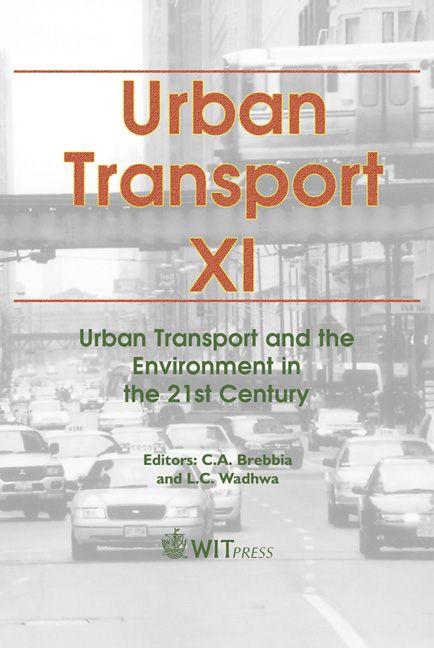Increasing The Level Of Service In 2-lane, 2-way Roads: A Simulation-based Approach
Price
Free (open access)
Transaction
Volume
77
Pages
7
Published
2005
Size
407 kb
Paper DOI
10.2495/UT050761
Copyright
WIT Press
Author(s)
S. Cardana, F. Barros, A. Seco & A. Bastos
Abstract
Increasing the level of service in congested 2-lane, 2-way roads is a problem of great economical importance. Due the complexity of this task, simulation can give an invaluable help in guiding the search for better and more cost effective road configurations. In this paper we describe Traveller, a 3D real time traffic simulator developed in the C++ language using Software Design Pattern (SDP) techniques. The simulator permits one to assess the impact in the level of service, caused by different relative locations and lengths of overtaking and nonovertaking areas. Preliminary data has been obtained for a few representative scenarios. These data include traffic vehicle delays. Simulation has shown to be an effective tool in optimizing road configuration. Keywords: simulation, traffic, road, level of service, congestion, optimization. 1 Introduction The basic problem addressed in this article is an evaluation of the potential for improvement of the level of service offered by two-lanes, two-ways roads, through adequate selection of the different overtaking and non-overtaking areas locations and lengths. With two lanes, each one allows circulation in one direction, requiring vehicles to overtake slower ones using the lane commonly used for opposing traffic. Most Portuguese roads have this configuration. Even major roads, such as main itineraries and complementary itineraries have many segments that fit this category. In these roads, as traffic volumes and geometric restrictions grow larger, the opportunity to overtake diminishes and vehicles start to bunch. This raises the problem that is to asses where should the road be
Keywords
simulation, traffic, road, level of service, congestion, optimization.





